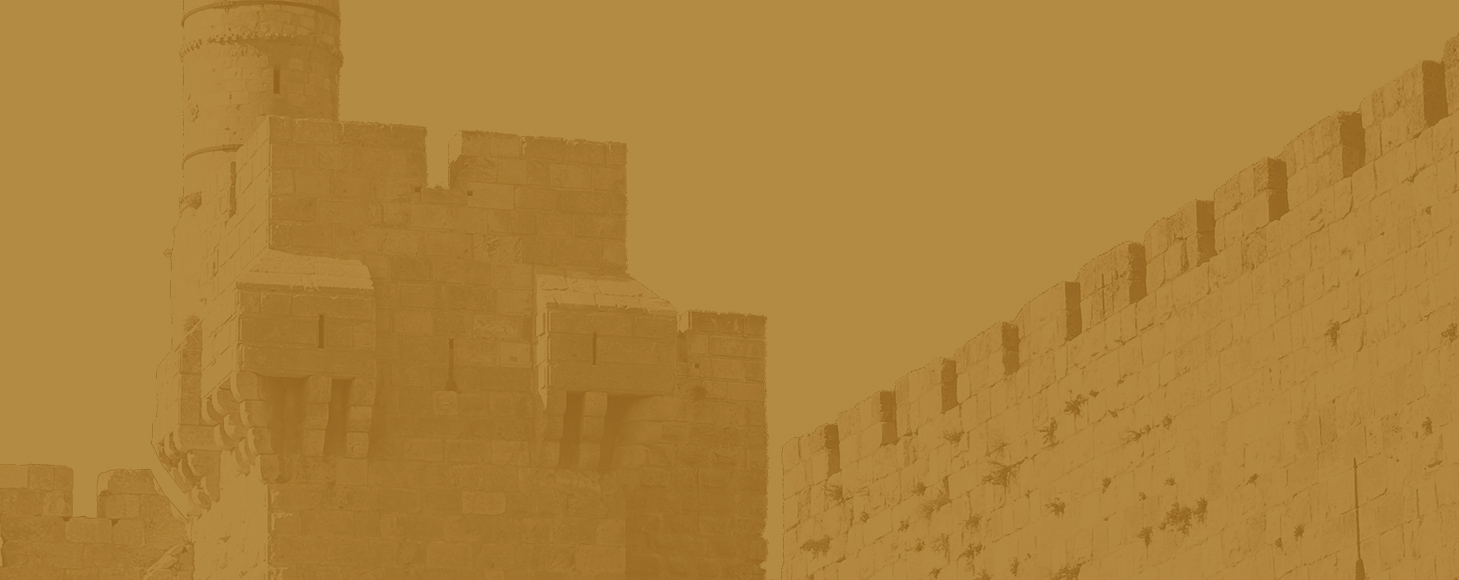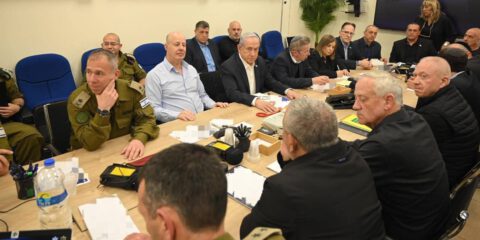אם תמשיך ההתעלמות של המערב מהממד האסטרטגי של הסכסוך בתימן, הדבר עלול לסכן בעתיד הלא רחוק את ביטחונו של המערב עצמו.
מבוא
מזה שש שנים משתוללת בתימן מלחמת אזרחים מדממת בין ארגון “אנסאר אללה”, הידוע בשמו הפופולרי יותר “התנועה החות’ית”, או בקיצור “החות’ים”, לבין הממשלה המוכרת על ידי הקהילה הבינלאומית בראשותו של אל האדי והנתמכת על ידי קואליציה של מדינות ערביות סוניות בראשות ערב הסעודית. עד כה אין כל סימן לסיום הלחימה, ועד עתה כשלו כל המאמצים להביא לפתרון דיפלומטי. ביסודו של דבר זו מלחמה בין איראן באמצעות שלוחיה החות’ים, תנועה פונדמנטליסטית שיעית עם גוון אנטישמי מובהק, לבין מדינות ערב הסוניות. תוצאותיה של מלחמה זו תהיינה הרות גורל לעתיד המזרח התיכון כולו. אם איראן תנצח במאבק זה ושלוחיה החות’ים ישתלטו על כל שטחיה של תימן היא תשיג בכך שליטה על נתיב השיט הימי של מֵצרי באב אל מנדב, שהוא אחד מפרוזדורי השיט הגלובליים שדרכם עובר הסחר הימי הבינלאומי והשולט גם על נתיב הסחר העולמי הדרומי של ישראל.
במהלך פברואר השנה פתחו החות’ים במתקפה חדשה שנועדה קרוב לוודאי להביא למפנה ולהכריע במלחמה. ייתכן שאת התעוזה לכך קיבלו מיחסו המקל כלפיהם של הנשיא הנכנס של ארה”ב, ג’ו ביידן, שקרא לשים קץ למלחמה בתימן. מתקפה זו מכוונת לכיבוש העיר מאריב ומחוז מאריב כולו, שהוא המחוז העשיר ביותר בנפט בתימן. כיבוש העיר ומחוז מאריב יעניק לחות’ים שליטה במרבית משאבי האנרגיה של תימן, יבטל את תלותם של האזורים שבשליטתם ביבוא אנרגיה, ויפסיק באבחה אחת את אספקת האנרגיה לאזורים שבשליטת ממשלת אל האדי. האפקט המורלי של ניצחון חות’י כזה עלול להמריץ את ערב הסעודית לצאת מהמלחמה ויעניק לחות’ים יתרון מכריע בכל הסדר על עתידה של המדינה. על כן, תוצאות הקרב על מאריב עשויות להשפיע על עתיד תימן ועל עתיד המזרח התיכון כולו, ובכלל זה על ביטחונה של ישראל. כרגע אין לדעת כיצד יסתיים הקרב, עם זאת כבר בשלב הנוכחי ועוד בטרם הסתיים ניתן ללמוד מהמהלכים בקרב מאריב על התפיסות הצבאיות העדכניות של איראן, ולכן יהיה זה מן הראוי ללמוד ולהפנים את הקווים העיקריים של הקרב ואת הלקחים ממנו.
רקע
בעת העתיקה הייתה מאריב בירתה של ממלכת סאבא, שהיא כנראה שבא המקראית שמלכתה ביקרה את שלמה המלך בירושלים. שרידי מאריב העתיקה היו אחד מאתרי התיירות הפופולריים של תימן המודרנית. משפרצה מלחמת האזרחים בשנת 2015 פינו אוטובוסי התיירים את מקומם לרכבים נושאי מקלעים. המלחמה החלה כאשר החות’ים תפסו את השלטון בצנעא הבירה ופתחו במתקפה לכיבוש כל שטחה הענק של תימן. המערכה שלהם לכיבוש עיר הנמל עדן נהדפה על ידי התקפת נגד של הכוחות הנאמנים לממשלה המוכרת של תימן בראשותו של אל האדי. החות’ים ספגו כישלון נוסף כשלא הצליחו להשתלט על עיר המחוז מאריב, אחת מעריה החשובות בשוליה של צפון תימן ההררית והמרוחקת כ-120 ק”מ בלבד מצנעא עצמה. מחוז מאריב של ימינו חופף כנראה לשטח שלטונה של מלכת שבא המקראית. זהבה האגדי של ממלכת שבא אבד במהלך הדורות והוחלף על ידי הזהב השחור – מרבצים של נפט וגז. כיום מחוז מאריב הוא המחוז העשיר ביותר בנפט בתימן. עושרו הטבעי של מחוז מאריב וקרבתו הגאוגרפית לצנעא הבירה הביאו לכך שהחות’ים ניסו לכבוש אותו מיד לאחר השתלטותם על צנעא ואזוריה ההרריים של תימן. מנגד, מרבית השבטים המאכלסים את מחוז מאריב הינם סוניים והם מתנגדים לניסיון ההשתלטות של החות’ים השיעים. מאז ועד היום הצליחו המיליציות המקומיות בסיוע צבא ממשלת אל האדי וכוחות הקואליציה הסונית בראשות ערב הסעודית להדוף את כל הניסיונות החות’יים להשתלט על האזור. מצב זה עשוי להשתנות כתוצאה מהמתקפה החות’ית החדשה שנפתחה בפברואר 2021. בשעת כתיבת דברים אלה הצליחו החות’ים להבקיע את דרכם עד למבואות העיר מאריב. נראה שההגנה העיקרית על העיר מתבססת על חיל האוויר המלכותי הסעודי שמנהל מערכת אוויר-קרקע נמרצת להאטת ההתקדמות של הכוחות החות’יים.
מהלך הקרב
לאחר כישלונם בשנת 2015 להשתלט על מאריב, ניהלו החות’ים מלחמת הטרדה והתשה נגד כוחות ממשלת תימן והקואליציה הסעודית בעיר ובמחוז מאריב במתכונת של תקיפות טילים וכלי טיס בלתי מאוישים (כטב”מים), שהפילו חללים רבים בקרב כוחות הקואליציה. לא ברור מה גרם להחלטה החות’ית לעבור ממלחמת התשה למהלך התקפי קרקעי לכיבוש העיר והמחוז. ייתכן שעלייתו לשלטון של הנשיא ביידן, שביטל כמעט מייד את החלטת קודמו להכריז על התנועה החות’ית כארגון טירור, שקרא להפסקת המלחמה בתימן ושהודיע על הפסקת התמיכה של ארה”ב בפעולותיה הצבאיות של סעודיה בתימן, הייתה אחד הגורמים החשובים, אם לא הגורם החשוב ביותר בהחלטה לעבור מהתשה להתקפה. מכל מקום, נראה שהחות’ים השליכו למערכה את כל העוצמה הצבאית שבידם במתקפה הזו והעבירו כוחות מגזרות מרוחקות יותר, ובכלל זה מגזרת הלחימה בעיר טעז (Taiz) שבדרום תימן ההררית (Arab News, 24.3.2021 ).
על פי מחקר של מיכאל נייטס ואלכס אלמדה ((Michael Knights and Alex Almeda, שהתפרסם באתר המכון הוושינגטוני למדיניות מזרח תיכונית, כוחות הקרקע החות’יים שנוטלים חלק בקרב על מאריב כוללים המוני מגויסים צעירים מאומנים חלקית שבראשם עומדים קצינים ומש”קים בעלי ניסיון. הקרב היבשתי נתמך במתקפה של טילים וכטב”מים מדויקים על המפקדות של כוחות המגינים שבתוך העיר ובסביבותיה. מכיוון שהגורם העיקרי בהגנה על העיר והמחוז הוא חיל האוויר הסעודי, על מטוסיו המאוישים ועל כטב”מיו, החות’ים מנהלים במקביל מערכה נמרצת לכרסום ושיתוק יכולותיו על ידי תקיפת בסיסיו שבדרום ערב הסעודית בעזרת צי הכטב”מים החות’י ההולך וגדל מחודש לחודש. לדוגמה, מספר התקפות הטילים והכטב”מים מתימן החות’ית על חמיס מושייט (הגובלת בבסיס האוויר הענק על שם המלך חאלד של חיל האוויר הסעודי) ועל הערים אבהא (Abha) וג’יזאן (Jizan) הסמוכות לגבול הסעודי-תימני עלה מ-5 תקיפות בינואר ל-27 תקיפות בפברואר 2021. יתרה מכך, המאמץ החות’י לדיכוי יכולותיו של חיל האוויר הסעודי מלווה במתקפה אסטרטגית מואצת על מתקני תעשיית הנפט של ערב הסעודית בעומק הממלכה על מנת לפזר את מאמצי ההגנה האווירית מהאזור הדרום-מערבי אל מרחבי סעודיה כולה.
הדיווחים המקוטעים בתקשורת והמידע המועט שנכלל בהודעות הסעודיות הרשמיות מספקים תמונה חלקית מאוד על מהלכי התקיפות האוויריות והטיליות של החות’ים ועל תוצאותיהם. עם זאת, גם בעזרת המידע החלקי שמתפרסם ניתן ללמוד על התעצמות התקיפות החות’יות על אזורי הגבול עם סעודיה, ועל המאמץ החות’י לאלץ את חיל האוויר הסעודי לגרוע מיכולות ההגנה שלו על ערי הדרום כדי להפנות אמצעי הגנה לערים ולמתקנים שבעומק שטחה הענק של סעודיה. בין 2.2.2021 ל-26.2.2021 הותקפה העיר אבהא 5 פעמים שבהן נורו לעברה 10 כטב”מים. אזור חמיס מושייט ספג באותה תקופה 9 תקיפות של 14 כטב”מים ועיר הנמל ג’יזאן ספגה 3 תקיפות, שתיים מהן על ידי טילים ואחת על ידי כטב”מים. בנוסף לכל אלה דיווח חיל האוויר הסעודי כי בשני מקרים הוא יירט בהצלחה נחילי כטב”מים שנועדו לפגוע באזורי הגבול עם תימן, אך לא פירט לאן כוונו הנחילים הללו.
במקביל ביצעו טילים וכטב”מים חות’יים פשיטות עמוקות במרחבי סעודיה. מאז תחילת המתקפה במאריב ספגה עיר הבירה ריאד לפחות 4 תקיפות, אחת בעזרת טיל בליסטי (שעל פי סרטוני הווידאו שצילמו עוברים ושבים יורט בצורה משכנעת על ידי מערכת ה”פטריוט” שבידי סעודיה) ושלוש פעמים על ידי כטב”מים שכוונו ל”מטרות רגישות” בתוך העיר ובסביבותיה. כטב”ם סילוני שוגר לעבר נמל ג’דה שלחוף הים האדום, המרוחק כ-700 ק”מ מגבולה הצפוני של תימן. התקפות העומק המרשימות ביותר עד מועד כתיבת דברים אלה אירעו ב-7.3.2021 וב-26.3.2021. תקיפות אלה שילבו חדירות עמוקות לשטח הממלכה יחד עם תקיפות קרובות על בסיסי אוויר, נמלי תעופה ומתקני נפט באזור הגבול עם תימן. לדברי החות’ים, בהתקפה של ה-7.3 שוגרו 14 כטב”מים ו-8 טילים בליסטיים, חלקם על מטרות באזורי הגבול אך חלקם גם למטרות הרחק בעומק סעודיה. התקיפה המשמעותית ביותר באותו יום הייתה התקפת כטב”מים על מתקני הנפט הענקיים שבראס תנורה (Ras Tanura) הממוקמים בצפון הממלכה על חוף המפרץ הפרסי, שמרחקם כ-1,200 ק”מ מהאזור הנשלט על ידי החות’ים. כמו כן נורה טיל בליסטי ארוך טווח על עיר הנמל דאמאם (Dammam) הסמוכה. צבא סעודיה דיווח שהטיל הבליסטי יורט וכי שבריו נפלו בעיר דאהראן (Dahran), וכי הוא הצליח ליירט 12 כטב”מים חות’יים באותו יום, אם כי לא ברור האם הכטב”מים שיורטו היו חלק מהכוח שכוון לעבר ראס תנורה. הסעודים הודיעו בתחילה כי לא נגרם כל נזק למתקנים בראס תנורה, אך כמה ימים לאחר מכן הודו כי אחד ממכלי אחסון הנפט שבמתקן נפגע בתקיפה והתלקח. בעקבות ידיעה זו עלו מחירי הנפט הגולמי בשוק הבינלאומי, אך הם צנחו במהרה חזרה למחיר הרגיל שלהם בתקופה. הסעודים טענו שהכטב”מים שהשתתפו בתקיפה זו לא שוגרו מתימן אלא מאזור שנמצא צפונית למטרה, ורמזו בכך שתקיפה זו, כמו התקיפה ההרסנית על מתקני הנפט שלהם לפני כשנה וחצי בספטמבר 2019, לא יצאה לדרך מתימן אלא מאיראן. באשר לתקיפות הסימולטניות באותו יום על ערי הגבול שלהם, הסעודים לא שחררו כל מידע על תוצאותיהן.
מתכונת התקיפה המשולבת של ה-7.3 חזרה על עצמה ב-26.3, שבו ציינו החות’ים את יום השנה השישי לפרוץ המלחמה בתימן. ב”מתקפת יום השנה השישי” שוגרו 12 כטב”מים לעבר ראס תנורה שלחוף המפרץ הפרסי, אך גם לעבר בתי הזיקוק הגדולים שבעיר ינבו (Yanbu) שלחוף הים האדום, ובכך טיווחו את ערב הסעודית לרוחבה ממזרח עד מערב. במקביל הם שיגרו 8 כטב”מים נוספים לערי הגבול הסמוכות לתימן. ממשלת סעודיה לא דיווחה על התוצאות של התקיפות על ראס תנורה וינבו. באשר לתקיפת הערים הקרובות יותר לתימן באותו יום, הסעודים הודיעו על פגיעה במכל אחסון נפט בעיר הנמל ג’אזאן הסמוכה לגבול תימן. מצילומי הלוויין המטושטשים שפורסמו בתקשורת נראה שהמכל נפגע בצורה דומה לפגיעות שהיו במכלי האחסון של מתקני הנפט שנפגעו קשות בהתקפת הכטב”מים בספטמבר 2019.
תוצאותיהם של “מבצעי ההתנגדות” הנרחבים הללו של החות’ים היו עד כה מוגבלות למדי, מספר הנפגעים הכולל נמוך מאוד (כנראה בכוונה) והנזקים החומריים עד כה מעטים. יתרה מכך, ההתקפות המכוונות על תעשיית הנפט הסעודית לא עיכבו עד עתה את ייצוא הנפט הסדיר מסעודיה ולא גרמו כשלעצמן לעליית מחירי האנרגיה בשוק העולמי. משקיפים רבים שיערו שההתקפות הגדולות על ראס תנורה ב-7.3 וב-26.3 נועדו להוות הצגות חוזרות של ההתקפה ההרסנית לפני כשנה וחצי על מתקני הנפט באבקייק (Abqaiq) וחורייס (Khurais), שהיכו קשות את יכולת הפקת הנפט של סעודיה ואספקתו למשך חודשים מספר, אך הפעם הדבר לא חזר על עצמו עד כה. ייתכן שהסיבה למיעוט היחסי של הנזקים במתקפות האחרונות הייתה יכולת הגנה משופרת של חיל האוויר הסעודי, תוך הסתמכות בעיקר על מטוסי קרב מאוישים וטילי אוויר-אוויר. לפי דבריו של הפרשן מהאמירויות ריאד קהוואג’י (Riad Kahwaji) באתר Breaking Defense, שפורסמו ב-30.3.2021, נראה שחיל האוויר הסעודי הפיק לקחים מההתקפה ההרסנית בספטמבר 2019, והוא מפעיל כעת את מטוסי ההתראה המוקדמת שלו מתוצרת ארה”ב ושוודיה כדי לאתר את הכטב”מים החות’יים ולהכווין את מטוסי הקרב לצורך יירוטם. צבא סעודיה מודיע לעיתים קרובות על יירוט והפלת כטב”מים במספרים רבים, ומפרסם סרטי ירי ממצלמות מטוסי הקרב שלו (בדרך כלל מסוג F-15) כדי להוכיח את טענותיו. לדוגמה, ב”מתקפת יום השנה השישי” של ה-26.3 הודיע חיל האוויר הסעודי כי יירט 8 כטב”מים שהיו בדרך לתקיפת עיר הנמל נאג’ראן הסמוכה לגבול התימני, ופרסם 5 סרטי ירי משכנעים למדי לביסוס טענתו. חיל האוויר הסעודי טוען גם שהצליח למנוע פגיעות בראס תנורה במהלך אותה מתקפה. מאידך גיסא נרשמו גם כמה מקרים שבהם הצליחו נחילים של כטב”מים חות’יים להגיע למעמקי הממלכה, מבלי שכולם יורטו בדרך כפי שהיה במתקפת הכטב”מים החות’ית ב-19.3.2021 שפגעה וגרמה לשרפה במתקן זיקוק נפט ליד ריאד הבירה.
המאפיין הבולט של המתקפות האוויריות החות’יות בתקופה האחרונה הוא העדפת שימוש בכטב”מים איטיים מונעי מדחף על פני טילים בליסטיים, טילי שיוט ורקטות. נראה שההעדפה הזו נועדה לנצל את החולשה הקיימת של מערכות ההגנה האווירית המיושנות למדי שבידי סעודיה ביכולת לאתר מטרות אוויריות שטסות נמוך ולאט. החיסרון הזה של מערכות מדור קודם בלט היטב במלחמה שהתנהלה לאחרונה בנגורנו קרבאך שבקווקז בין ארמניה לאזרבייג’אן, שבה כשלו מערכות ההגנה האווירית מתוצרת סובייטית ורוסית באיתור הכטב”מים התוקפים של אזרבייג’אן וכתוצאה מכך הושמדו רובן ככולן וגרמו למפלת צבא ארמניה. כיום נראה שהכטב”מים החות’יים עדיין מסוגלים לחדור למעמקי השטח הסעודי, אך יחד עם זאת אפשר להתרשם שחיל האוויר הסעודי מצליח להתמודד עם איום הכטב”מים באזורים הדרום-מערביים של הממלכה, כלומר באותם אזורים שאליהם מכוונים החות’ים את עיקר המאמץ של תקיפות הכטב”מים שלהם. משרד הביטחון הסעודי מפרסם כמעט מדי יום סרטי ירי של יירוט כטב”מים חות’יים בדרכם לערים הדרומיות של המדינה. יתרה מכך, נראה שחיל האוויר הסעודי פועל גם באופן התקפי כדי לפגוע ביכולת השיגור של החות’ים. לדוגמה, ב-6.3.2021 פרסם משרד הביטחון הסעודי סרט ירי שבו נראה כטב”ם חות’י מושמד על הקרקע טרם המראתו. סרטון אחר מראה פגיעה בטיל או רקטה על כן השיגור שגורמת לשרפת הטיל על המשגר. ב-26.3.2021 הודיעו הסעודים על השמדת בונקרי אחסון של כטב”מים ומשגריהם בעיר צעדה (Sad’ah), הבירה הצבאית של האזור הנשלט על ידי החות’ים, וכן הלאה.
בעת כתיבת דברים אלה הקרב על מאריב עדיין לא הוכרע. נראה שהחות’ים עושים מאמץ לכתר את העיר מאריב עצמה בתנועת מלקחיים, ונראה שהם השיגו כמה הישגים ורשמו התקדמות, אם כי בקצב איטי למדי. נכון לעכשיו, המלקחיים עדיין לא נסגרו והקרב הולך ונמשך. כאמור, נראה שמה שמנע עד כה מהחות’ים לסיים את הכיתור ולכבוש את העיר הוא הפעילות הנמרצת של חיל האוויר הסעודי שמתבטאת בתקיפות על הגייסות והלוגיסטיקה של התוקפים החות’יים. ניתן אולי להסיק מכך שבמערכה זו הגיע חיל האוויר למיומנות מבצעית גבוהה יותר מזו שהייתה לו קודם.
לקחים לישראל
הקרב על מאריב אומנם לא הסתיים עדיין, אך אחד הלקחים ממהלכו בולט לעין כבר עתה: הדוקטרינה הצבאית האיראנית מעניקה לכטב”ם המדויק עדיפות שווה לטילים בליסטיים או אפילו גבוהה יותר, ומסתמכת בכך על הקושי של מערכות הגנה אווירית קרקעיות מהדורות הקודמים יותר לאתר וליירט כלי טיס איטיים הטסים בגובה נמוך. נראה הסעודים מצליחים להכיל את מתקפת הכטב”מים החות’יים בעזרת מערכות מוטסות: מטוסי התראה שפועלים בשילוב עם מטוסי קרב כבדים רב-תכליתיים – רובם ככולם מסוג F15, שנמצא גם בשירות חיל האוויר של ישראל. במתאר המלחמות הצפויות לישראל, מערך מטוסי ההתראה ומערך מטוסי הקרב המאוישים יהיו משאבים יקרי ערך שיידרשו לצורך שמירת העליונות האווירית וביצוע פעולות התקפיות. כטב”מים שלטו בכיפה בכל המלחמות האחרונות שהיו באזור, החל מצפון סוריה דרך מלחמת האזרחים בלוב, מלחמת נגורנו קרבאך השנייה באוקטובר שעבר ועד למלחמת האזרחים בתימן שעדיין משתוללת שם. קיים צורך ברור במערכות הגנה קרקעיות, עצמאיות בעלות כושר לאתר, לאכן ולהשמיד כתב”מים מנמיכי טוס, אשר עלויותיהן תהיינה בהישג יד תקציבי, כדי לשחרר את משאבי המערכים המוטסים של חיל האוויר למשימות הספציפיות שלהם. המערכת הקרקעית נגד כטב”מים צריכה להסתמך הן על הגנה “קשה”, לאמור יירוט והשמדה, והן על הגנה “רכה” הבנויה על נטרול הכטב”מים ושיבוש פעולתם בעזרת לוחמה אלקטרונית.
משמעויות אסטרטגיות
כיבוש העיר ומחוז מאריב על ידי החות’ים, אם אכן יתממש, יהווה ניצחון אסטרטגי של ממש שיקרב את ניצחונם במלחמת האזרחים. בין השאר, ניצחון בקרב על מאריב יעמיד לרשות החות’ים את כל משאבי האנרגיה של המחוז ובו בזמן ישלול אותם מחלקי תימן הנשלטים על ידי הממשלה המוכרת בראשות אל האדי. מעבר למשאבים הכלכליים שהדבר יעמיד לרשות החות’ים, עצם ההישג הצבאי ישדר מסר של עוצמה שלא ניתן לנצחה שעלול להקטין במידה ניכרת את המוטיבציה של סעודיה להשתתף במלחמת האזרחים לצידה של ממשלת אל האדי, ולפנות בכך את הזירה לכוחות החות’יים להשתלט על תימן כולה, מה עוד שממשל ארה”ב הנוכחי הכריז על הפסקת תמיכתו במאמציה הצבאיים של סעודיה לבלום את החות’ים.
ניצחון בקרב על מאריב יהווה הישג אסטרטגי ממדרגה ראשונה לאיראן ולבני חסותה החות’ים, הישג שיטיל צל ארוך על כל המהלכים הדיפלומטיים באזור הן לגבי עתידה של תימן והן על סוגיות אזוריות נוספות. מדיניותו הפייסנית של הנשיא ביידן כלפי החות’ים עלולה להביא לכך שהמלחמה תימשך עד שכל שטחה של תימן – תימן ההררית שנמצאת כבר כיום בידי החות’ים, ותימן המדברית שעדיין נשלטת על ידי כוחותיו של אל האדי והקואליציה הערבית – יהיה בידיהם, ותימן המאוחדת תהפוך לפלך נוסף של האימפריה האסלאמית האיראנית המתגבשת צד בצד עם לבנון ועיראק, ובעתיד אולי גם סוריה.
המערב נוטה לראות את מלחמת האזרחים בתימן בעיקר כטרגדיה אנושית, ויש צדק רב בכך. עם זאת, למלחמת האזרחים בתימן יש מעבר לממד הטרגי גם ממד אסטרטגי מהמעלה הראשונה. אם תימשך ההתעלמות של המערב מהממד האסטרטגי של הסכסוך בתימן הדבר עלול לסכן בעתיד הלא רחוק את ביטחונו של המערב עצמו.
סדרת הפרסומים “ניירות עמדה” מטעם המכון מתפרסמת הודות לנדיבותה של משפחת גרג רוסהנדלר









 - בניית אתרים
- בניית אתרים